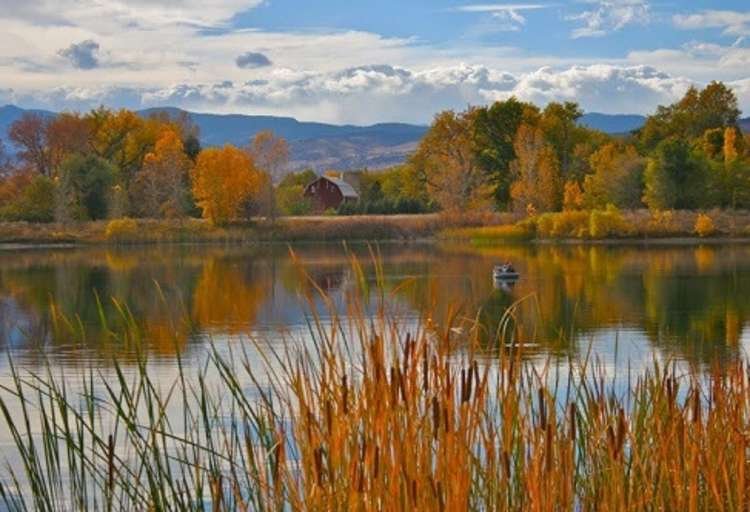About the St. Vrain Valley
Home to bald and golden eagles, blue herons, white tailed deer, and the endangered Preble’s Meadow Jumping Mouse, St. Vrain Valley is a quiet and historic jewel within Boulder County. Originally inhabited by the Arapaho and Ute peoples and now one of the last pastoral farmland valleys on the Front Range, the St. Vrain Valley is a favorite of cyclists, runners, sportsmen, hunters, birder watchers, fishermen, and tourists. This valley is home to some of Boulder County’s oldest working ranches and a serene day trip just minutes from Boulder, Longmont and Lyons.
The town of Hygiene, situated in the center of the valley at 75th Street and Hygiene Road, is named after Hygieia, Greek goddess of health and cleanliness. The town’s original claim to fame was the Hygienic House, a sanitarium built in 1881 for patients seeking clean, high elevation mountain air.
The valley is an important corridor for all manner of wildlife, with regular sightings of blue heron, coyote, black bear, fox, owl, kestrel, red tailed hawk, falcons, and of course bald and golden eagle and the valley’s own herd of white tailed deer.
Geologically speaking, the St. Vrain River Valley stretches southeastward from the town of Lyons towards the city of Longmont. It is a broad and shallow grassy valley which follows and was created by the St. Vrain Creek. The valley floor is covered by the alluvial soils and gravels of the river’s flood plain. Notably, outcrop of bedrock is absent on the floor of the valley, yet to the south of the intersection of Hygiene Road and 61st Street, the Hygiene Sandstone of the Cretaceous Pierre Shale can be observed on the valley’s southern slope as a prominent north-trending ridge commonly referred to as the Hygiene Hogback.

Dr. Louise Kiteley is a geologist who has been studying the Hygiene Hogback for the past several years. Dr. Kiteley notes that this particular hogback is unique in the geologic history of the Front Range. It is 60 million years old, and this is one of the few locations where this geologic formation can be found on the surface. This formation is part of the delta that was formed by runoff from the Rocky Mountains into the Western Interior Seaway– the saltwater sea that ran from Canada to the present-day Gulf of Mexico. The geomorphology of this formation is as important to geologists as ancient archaeological sites like Mesa Verde are to archaeologists. The geologic formation of which the Hygiene Hogback is part cuts across the St. Vrain Valley.
The St. Vrain Valley extends from Lyons to Longmont in a southeasterly direction.
With the CEMEX parcel making up approximately 1000 acres, Dowe Flats Mine occupying about 1600 acres, the Martin Marietta parcel next door totaling nearly 800 acres, and the Aggregate Industries parcel near Pella Crossing making up another 300 acres, you can surely see the immense impact new mining on those parcels would have on both the land and the wildlife who call it home.




